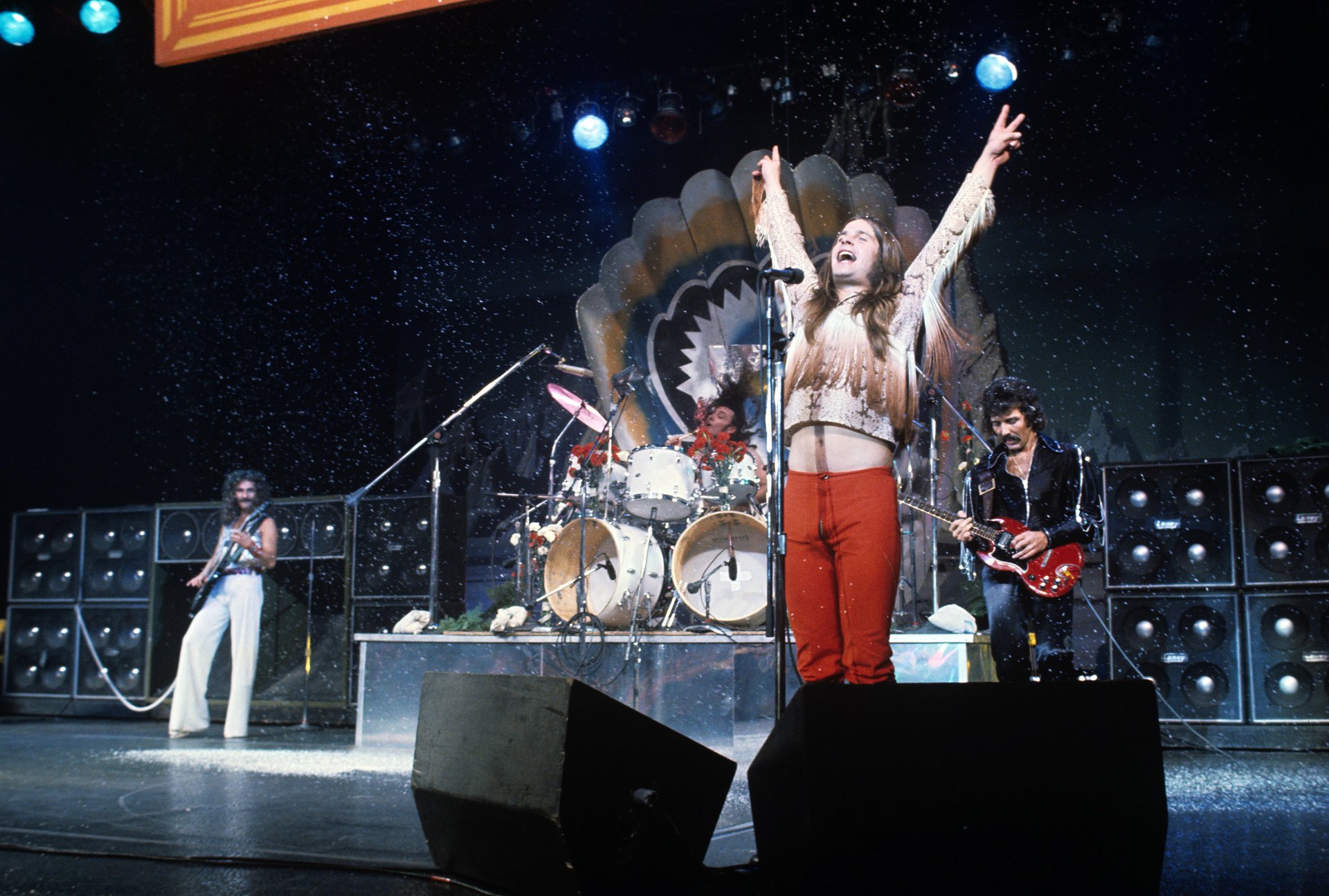Quartzy: the heavy edition
Happy Friday!

Happy Friday!
I’m Jason Karaian, Quartz’s finance editor, and there is an unholy racket as I write this. I mean that literally, because “Dear Lucifer” by the Swedish metal band Monolord is playing in the background.
The vaguely evil undertones don’t really reflect my state of mind, but I can’t get enough of this stuff. It’s the go-to when I need to concentrate at work, which often involves charting share prices, editing stories about international trade, or digging into the footnotes of financial statements. I wrote a book about the role of the Chief Financial Officer, with large passages tapped out to a soundtrack of bone-rattling bass and squealing guitar feedback.
I find myself more drawn to heavy metal as time goes on. It’s not just for teenage burnouts going through a rebellious phase. In fact, according to Spotify, metal fans are the most loyal of any group of listeners on the platform. And it’s not because they’re angry, maladjusted, or compelled by the occult.
Heavy metal is the thinking person’s music. Stay with me here.

This year marks the 50th anniversary of the founding of Black Sabbath, considered by many to be the first heavy metal band. The exploits of Sabbath frontman Ozzy Osbourne and others in metal’s early days, both real and perceived, remain imprinted on the music. But 50 years is a long time, and the the genre has evolved considerably.
Like jazz, metal has since become a “canonized art music,” in the words of one critic, “a style you need to know if you want to be in the know.”
So let’s get to know it better, shall we?

A joyful noise. When fans of metal listen to the music, they don’t feel rage, anger, or despair, but “power, joy, peace, and wonder,” according to research published last year. A huge survey in 2010 sought to categorize people by their musical tastes, and found a significant overlap between metal and opera fans, who shared “similarly creative and gentle personalities.”
For more on heavy metal’s intellectual underpinnings, there’s the Metal Music Studies Journal, surely the rockingest peer-reviewed journal out there.
Of course, reading about the music isn’t the same as listening to it. Not everyone has a high tolerance for dissonance, and plenty of people are squeamish about queueing up tracks from bands like Cradle of Filth, Pig Destroyer, or 3 Inches of Blood in polite company.

And that’s fine! There are myriad metal subgenres to suit many tastes. All of them feature a certain amount of edginess, but why shy away from a bit of danger in your musical diet? You can summon a world of music at your fingertips, so don’t let inertia or algorithms serve up the audio equivalent of Diet Sprite.
Granted, heavy metal often comes with a generous helping of gore, demons, and sub-Lord of the Rings fantasy faffery. But if you’re among the millions anxiously awaiting the return of a certain blockbuster TV show that features ice zombies and undead dragons, then perhaps you’re more metal than you think.
The musical fruit. “The term ‘invisible oranges’ describes the clutching gesture you make when the mighty force of metal flows through you,” explains the blog of the same name. If a monumental riff or hypnotizing dirge provokes this visceral reaction—throwing up the horns is also acceptable—then you’re onto something. It’s the metal equivalent of the goosebumps you get when an opera singer hits the high note.

That feeling is possible while listening to any music, of course, including pop songs about life and love. For me, though, there is a more primordial appeal to songs written, say, from the perspective of ghosts who “detail painful, violent ends inflicted by nature’s four forces—fire, earth, water, and wind—that the dead are forced to endure for eternity.” Now that’s operatic.
The dark side. At the moment, I’m deep into “doom metal” and its many offshoots, which sit at the slower, sludgier end of the spectrum. The through-line from Black Sabbath to this “new metal baroque” is clear, and most songs essentially revolve around monolithic, down-tuned blues riffs. It’s a good on-ramp to the world of metal, for a few reasons.
First, it rocks.
Second, it’s particularly apt as a soundtrack at work, where many of us listen to music these days, to help focus or simply to drown out the din of open-plan offices. Pivot tables in spreadsheets are already pretty scary, so why not queue up some spooky ambiance and turn “darkness into euphoria”? Metal tracks also tend to run long, with extended wordless stretches, which can serve as a kind of audio pomodoro timer for the productivity-minded.
And lastly, the economics of streaming aren’t kind to heavy metal. Paying by the stream is an incentive to create lots of short songs, and most metal bands aren’t into that. These longer songs require sustained effort, from creators and fans alike. Choosing music based on 60-second samples isn’t a viable strategy when a seminal track is an hour-long dirge in which the lyrics start eight minutes in.

There’s a silver lining to this. The paradox of choice on streaming platforms can lead to paralysis, to a calcification of taste and habits. Taking on something new and difficult forces you out of the algorithmic bubble and into the world: to record stores, concerts, or conversations with people about music. When something isn’t served up out of the blue, it’s more meaningful and likely to stick. I still associate bands and songs with specific friends and events. Some of my more recent finds, as it happens, came via Quartz’s erstwhile tech editor—our chats were half about markets and half about metal.
Crowd sourcing. If you like what you hear, you’ll be in good company.
Anthropologist Lindsay Bishop has toured with metal bands in the UK for her research on identity and community. She found that, “far from the popular perception of ‘angry teenage males,’ heavy metal is culturally inclusive, with a rich and varied audience—including many women and older adults—that embraces an array or religions, sexual orientations and political leanings.”
There’s Freddy Lim, a rising star in Taiwan’s parliament, who still records with his band, Chthonic, one of Asia’s top metal groups. Last year, Danica Roem became the first openly transgender person elected to a US statehouse, and probably also “the first member of a thrash metal band elected to a such a prominent governing body.” Albuquerque mayor Tim Keller recently signed a bill granting city workers paid parental leave while wearing a Pantera sweater.
Delightfully, actor Sir Christopher Lee, who has played a Bond villain, Tolkien wizard, and Star Wars sith lord, recorded a series of melodramatic metal albums in his 80s and 90s. “It’s very important,” he said at age 92, “to show people that even now I can still surprise my audience.”

This is not to underplay the unpleasantness in some corners of the metal world, as two new films reveal. The Dirt wallows in the excesses of the miscreants in LA hair metal band Mötley Crüe. Even darker, Lords of Chaos, starring the youngest Culkin (Rory), tells the true story of Mayhem, a Norwegian black metal band connected with church burnings, murders, and cannibalism. So there’s that.
But more representative, I think, is the mix of earnestness and humor on display in Metalocalypse, a goofy cartoon series that ran for four seasons, both celebrating and satirizing the metal scene. In my experience, metalheads are a friendly, open-minded bunch. One of the guitarists in Neurosis teaches elementary school in Idaho.
Yes, metal can be cartoonish at times, and suffocating in others. Much of the time, though, it’s sublime. “The essence of heavy metal,” said one reviewer, “is discipline in service of the preposterous.” That’s life, eh?
As Monolord’s frontman explains, the song “Dear Lucifer” isn’t a paean to the Devil, but a rejection of him in favor of a far more powerful force: “Worship the riff, not gods.”
Have a great weekend!


Let’s do this. And here is where I share some current favorites with you: a dozen songs in a playlist that runs for a brisk three hours. Actually, it’s a bit longer than that, because I sprinkled in a few yacht rock hits—the Doobie Brothers, Steely Dan, and the like—as periodic palate cleansers. There’s only so much doom you can take at once. Sometimes you feel like a nice, refreshing Diet Sprite.